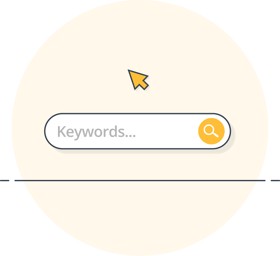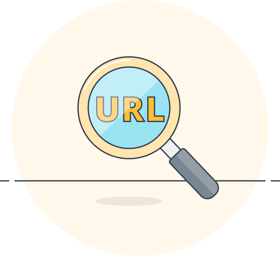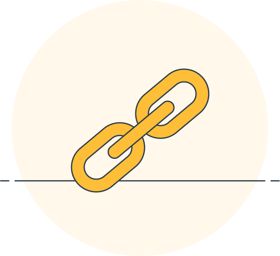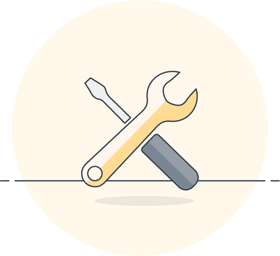You can’t go too far into starting your online store without reading about the importance of search engine optimization (or more casually, SEO). It’s a fact of the online experience—to be found, you must have great SEO.
For eCommerce shops, having great SEO means your brand and your products will get exposed to more buyers. Simply, it means more sales.
So, it’s no wonder that so many people take eCommerce SEO so seriously. It matters.
And there are so many different ways that you can improve your SEO—from doing your keyword research and creating great content to maintaining a clear site structure and making your pages speedy. You can also read our guides to writing effective meta descriptions and Etsy SEO.
I asked the internet for some eCommerce tips and the internet responded. Honestly, I got way too many tips. People have a lot of advice about SEO.
I trimmed it down a bit and split their advice up into overarching themes. By the end of this, you should have a fairly good idea of what you should do to make your store super SEO-friendly.
A ton of eCommerce SEO tips from internet experts
Given the amount of great information included below, here’s a handy table of contents that will bring you to your section of choice.
- Keyword research
- Content creation
- Customer reviews
- Site structure
- Category pages
- Product pages
- Security
- Internal linking
- URLs
- Mobile-first
- Speed optimization
- Backlinks
- Image optimization
- Videos
- SEO tools

Do proper keyword research
You know plenty about what you sell, but do you know how people search for it? Understanding the search landscape for your niche can go a long way toward getting your products seen online. Here are some tips about keyword research.
“Too many brands leave this to chance, and by not doing the groundwork first, are missing out on huge potential to attract passive organic traffic to their stores. Keyword research is the foundation of an effective SEO strategy.
Dig into the data using Google Search Console or a keyword research platform like Ahrefs, and understand things like how many people are actually searching for these terms and the search intent behind them. Look and see what kind of content search engines are currently ranking for each search query.
This will give you a clearer picture of how you can best serve your audience with your content. A targeted keyword strategy will ensure you are attracting the right kind of customer to your brand rather than spending time, energy, and money attracting the wrong kind who will never convert.”
Emily Amor, SEO Strategist at Digital Darts
“A successful SEO strategy involves on-page keyword optimization. For an eCommerce business, on-page keyword optimization can be achieved through keyword research—discovering long-tailed variations of keywords characterized by low CPC, SEO difficulty, and relatively high volume. Subsequently, these long-tailed keywords can be integrated into detailed and keyword-optimized product pages.
Find several (at least 10-20) businesses within the same or similar niche as your business and plug their websites into an SEO service such as Google keyword planner, Ubersuggest, SEMrush, Ahrefs, or Moz's keyword explorer. You’ll find the keywords your competitors are ranking for, and long-tailed variations of those keywords to use on your blog, product pages, and category pages.”
Bill Joseph, Founder of Frontier Blades
“For those who are in the process of building an eCommerce store, I would highly recommend conducting some keyword research ahead of time. This will allow you to target keywords that are both relevant to your business and ones that are not overly competitive to the point where you would never appear in search results.
Once you have some keywords locked in, assign those keywords to specific pages and then utilize them throughout each page. So if your business sells vegan chocolate chip cookies, you will want to use those exact four words in the title tag, meta description, URL, body text, and alt text on the relevant product listing. It can also help to use variations of that keyword throughout the page's body text.”
Michael Anderson, SEO Specialist at GeoJango Maps
“While we obviously want to rank for "big" keywords (the ones that drive the highest search volume), it's just as important to not lose sight of small keywords or those with smaller search volumes. Small keywords are often long-tail keywords by nature, meaning that they are more specific and the search intent behind them is more clear.
For example, "tennis shoes" would be a bigger, broader keyword, whereas "women's K-Swiss Hypercourt Express white tennis shoe" is much more specific. While the term "tennis shoes" is going to garner more searches, someone searching for "women's K-Swiss Hypercourt Express white tennis shoe" is probably searching for that shoe with the intent to buy.
To really start driving traffic and ranking on search, it's critical to focus on these kinds of smaller keywords. The best way to optimize for smaller keywords is to develop content around them. Create landing pages and use those landing pages to link out to other related content like buying guides, product guides, etc.
Developing great content and specific landing pages is going to help you compete with the likes of Amazon, Walmart, and Target. As you start to rank higher for your smaller keywords, your authority in the space will increase, making it easier to rank for the "bigger keywords" over time.”
Justin Smith, CEO of OuterBox
“It's intuitive enough to try and rank for 'women's hoodie'. It has an insanely high search volume. Still, it's something that every single retailer AND every fashion blogger will rank for, and you'll never ever beat the giants.
A small eCommerce store should be much more specific and aim for long-tail keywords that have the best search volume to keyword difficulty ratio. For example, 'women's sleeveless hoodie' has a much lower keyword difficulty. Even if it has a lower search volume (which it does), it will still be so much easier to rank for.
It's better to reach the 150 monthly visitors who will search for women's sleeveless hoodies in your region than reach zero out of hundreds of thousands of visitors who search for women's hoodies in general.”
Mark Coster, BSc Ph.D., Owner of STEM Toy Expert

Create quality content
Now that you have done your keyword research, it’s time for you to focus on creating great content that centers around some of those high potential keywords. This is great not only for your product and category pages but also for that blog you may have been neglecting.
“SEO is fluid but content quality isn't. This is a simple fact that most brands, especially the emerging ones, don't seem to acknowledge. It is common to see eCommerce sites that recycle the same posts with the trending SEO practices without adding any new content.
Currently, the trend is winning the snippet with standalone answers. Some brands have jumped on the practice with zero regards for content quality. Come new search engine algorithms and your pages lose rank instantly.
What to do? Always remember that indexing and re-indexing of content is an ongoing process. Make a mark by posting quality content that stands the test of time.”
Swati Chalumuri, Founder of HearMeFolks
“Update any old content on your site. Just go into Google Search Console, see what an article is ranking for, and optimize it for those keywords while adding in some new/updated content.”
Sam Bretzmann, Owner at Whiskey SEO
“Answer common Google questions in your content. To find these, Google your primary keyword and scroll down to “People Also Ask.” These are questions that Google thinks are related to your topic so they’ll expect you to answer them in your content.”
Greg Birch, Senior SEO Specialist at Store Space
“Start a blog. Publishing blog posts on your eCommerce site is a great way to increase traffic and can easily be accomplished by small business owners themselves. The key is to not simply write about your own business and products—the goal is to reach people who don’t know about you yet!
Write about topics of interest and questions your target audience is asking to bring them to your site, and hopefully turn them into customers that way.”
Michael Steele, CEO of Flywheel Digital
“My #1 tip for non-tech savvy business owners looking to boost their SEO: Write *long* blog posts. Go for 1500 words at a minimum. Word count is one of the simplest SEO factors that you have direct control over.
In our testing, we've consistently seen longer blog posts outperform multiple posts on the same topic that cumulatively add up to the same number of words. This does *not* mean that you should dilute content by just adding fluff in order to meet a word requirement.
Never sacrifice content quality. But all things being equal, spend more energy writing one long, deep-dive post rather than a number of small ones.”
Sunny Ashley, Founder of Revy Solutions
“The easiest thing to do for SEO when you're a new seller is to have a blog. Have a writer publish articles for you in the 1,000 - 1,500 words range. Post those about once per week, maybe one every other week, then after you've had about 10 of those published, start to promote them on social media and your email list and possibly contact some other blogs to see if they'll link to it for you. It's a quick and easy way to start and can be pretty inexpensive.”
Andrew Maff, Founder of BlueTuskr
“Create evergreen seasonal occasion pages. Retailers have a tendency to create new pages for an event each year, i.e Valentine’s Day 2019, Christmas 2020, or Black Friday 2021. However, these pages should just be a singular URL that’s updated each year in order to retain its SEO value and visibility. Otherwise, you’re just resetting your efforts each time.”
Pete Reis-Campbell, Founder of Kaizen

Leverage customer reviews
Shoppers care what other shoppers think. That’s why customer reviews are such an important asset for your store. But, they are also a powerful ally for your eCommerce SEO efforts. Your customers’ testimonials are valuable content full of keywords.
“Aim for long-tail keywords by enabling customer reviews and questions.
Customer reviews are a trove of relevant natural long-tail keywords for your product pages. It comes with moderation though: Have a review team to make sure the review is real, valid, and free of inappropriate language.
Provide a section for customers to post their questions about the products too, as this practice could help you win the ‘People also ask’ section on the Google search result page.”
Jill Sandy, Founder at Constant Delights
“As an eCommerce business, we recommend incorporating rich snippets within your product pages.
By procuring customer reviews on your product pages, Google automatically identifies these reviews and presents them as review snippets for these product pages within SERPs, thereby increasing their SERPs rankings leading to more organic traffic and increased click-through rates (CTRs).”
Bill Joseph, Founder of Frontier Blades

Create a clear site structure
The ability of a shopper to simply and intuitively navigate through your site is vital to keeping them on your site. This is the difference between making a sale and losing a customer.
You want to think about how easily someone can find what they are looking for from your homepage while ensuring search engines can index your pages without running into roadblocks.
“A cluttered site will confuse not only your visitors but Google as well. As your site grows, your contents pile up and therefore it needs to be organized and maintained.
If not, Google won’t know where to find your most valued content. To be precise, your site’s structure will serve as Google’s guide on how to crawl and rank it.
You need to keep it decluttered by removing your old content. If you have out-of-stock or discontinued products, redirect its links to existing ones.”
Israel Gaudette, Founder of Link Tracker Pro
“Get your sitemap in order. This works in conjunction with the above internal structure check. Ultimately, if you don't have a good map laid out, both bots and users will get lost.”
Cary Haun, Technical SEO Specialist at Twelve Three Media
“Make sure your site structure makes sense for your industry. For example, if you sell food products like we do, you should have category pages for top-level groups of products (i.e. olive oil) and then individual product pages that are below your category pages.”
Geoffrey Swetz, Operations Manager at Spoonabilities
“The structure of your website is surprisingly important. To improve your visibility you need both clean URLs and so-called 'breadcrumb navigation' so that users can easily see where they are on your site. Both of these can be achieved relatively easily and in my experience make a big difference to both visibility and sales.”
Parker Russell, Owner and CEO of Black Ink Coffee

Utilize your category pages
Speaking of structure, your category pages are vital pieces of your site’s hierarchy. It’s also how people find what they are looking for—narrowing down from the broad idea of what they want down to that specific blouse or pair of jeans.
Beyond navigation, category pages have the opportunity to rank on search engines if done right. You want to take advantage of every chance to get seen.
“One thing you should do is create more category pages for your products. Let's take a facial mask brand as an example. Many brands would simply have a "Shop" navigation item, and then list all of their masks on that URL.
The better way is to have several dropdown items under the shop button. For instance:
- Your main Facial Mask page that links out to the category pages for:
- Green Tea Face Masks
- Korean Face Masks
- Charcoal face masks
- Your other product categories
By grouping these subcategories on different pages, you can write individual page titles, meta descriptions, and page content specifically for those different subcategories. This will allow you to rank on Google for those different keywords.”
Adam Gingery, Digital Strategy Manager at Majux Marketing
“Provide short descriptions for your Product Category pages. Your product category page is a gateway for customers to reach your individual products.
Design a section where you could write a short and meaningful description for the category and use it to link internally to different categories and high-margin product pages. I see many eCommerce stores lacking this.”
Jill Sandy, Founder at Constant Delights
“If you have several product types, think about if creating categories for them all individually would help to target more specifically. For example, if you have ‘Running Clothes for Men’, you might want to consider breaking this down into ‘Running Shorts’, ‘Running Tops’, ‘Running Jackets’, etc.
This will allow you to target a broader range and more specific—potentially less competitive—keywords.”
Daniel Cartland, Head of SEO at NOVOS

Make your product pages convert
Your product pages are where the sales really happen. Shoppers clicking around on product pages are in consideration mode—reading through product descriptions, rifling through product photos—before they either go elsewhere or add it to their cart for checkout.
And, just like category pages, there is the opportunity to rank on search engines, getting shoppers directly to the pages they want to see.
“Write great product descriptions! This improves a website’s rankings by providing Google with more information about what the page is about and can also help with targeting long-tail keywords.
It can also increase conversion rates by giving customers more information about the product to inform their purchase decision.”
Michael Steele, the CEO of Flywheel Digital
“A well-written description of each product can help both search and conversions. Make sure the description contains your target keyword you want the product to show up for in search, typically around 2-3% of the text. Don’t overdo it—Google and other search engines view this as ‘keyword stuffing’ and will not rank you as highly if you do that.
The J. Peterman Company is famous in part for using an interesting storytelling approach for their products. Reading a well-written description can cause the reader to envision themselves using your product, or imagine the look on a loved one’s face when they receive the product.
This can make them more likely to buy your product. After all, you do want people to first find your products, then buy them, right?”
David B. Wright, President of W3 Group Marketing
“One of the most overlooked SEO improvements for eCommerce shops, mostly because it’s a lot of work, is to NOT copy and paste manufacturer product descriptions into your product pages.
Google doesn’t like duplicate information, and if you and eight competitors all sell product X, and you all have the same product description, Google is only going to pick one of you to rank. It’s a pain, but you need to re-write the descriptions while still describing the product effectively.”
Geoffrey Swetz, Operations Manager at Spoonabilities
“Make sure all your pages have unique and targeted page titles and H1s. Often with smaller sites product pages may get more traffic than major categories because they are ultra-targeted. Make the most of this!”
Daniel Cartland, Head of SEO at NOVOS

Keep security in mind
Your store is dealing with real customer information, so it’s important that they feel safe making a purchase on your site. If you aren’t taking security seriously, Google will not take your site seriously.
“Don’t forget to implement an SSL certificate. Since you will likely handle payments through your eCommerce site, it is essential to provide a secure connection using HTTPS by implementing the SSL certificate.
HTTPS can help keep your clients safe. Getting people to see that your site is on HTTPS as soon as they get there can be a huge confidence boost for them to continue making a purchase. It can also improve your SEO as Google uses HTTPS as a ranking signal.”
Simon Dwight Keller, Founder of SDK Marketing
“Keep your store secure with HTTPS. It isn't too overdue to get your store protected. Here's why it is remarkably significant. As a store owner, you are assembling personal details from customers. It's the best manner to guarantee that all data collected is encrypted. All data.
In case you need another reason to do this, Google certified HTTPS as a ranking determinant for sites. So Google will reward you as well. Fortunately, most eCommerce platforms offer SSL standards on their platform or make it easy to purchase.”
William Cannon from Signaturely

Don't overlook internal linking
Internal linking is a great way to connect contextually related parts of your site and make your content easily accessible. It also allows the crawlers used by search engines to access all your pages with ease, ensuring that your pages will be indexed and findable online.
“If you do a quick search about leveraging content marketing for SEO purposes, you will probably immediately discover that the current recommendation is to go for very long articles (over 2,000 words).
What the experts do not always mention is this is only the tip of the iceberg. The real power of content lies in multiple pages’ ability to create a web of information through internal linking, which consists of linking your website’s different pages to each other.
This allows the SEO juice to sprinkle down from your most popular pages to the others—including product pages on your online store.”
Thibaud Clement, Co-Founder & CEO at Loomly
“Think about which pages are the most valuable for your business. We call those high-priority or money pages because they’re the ones bringing in the most conversions and customers. Once you decide on which they are, start linking to them from other places on your website—adding them to site-wide navigation, blog posts, etc.
Pro tip: To get the most value out of internal linking, find pages that have been linked from other websites the most—they carry ‘link equity’ which you can pass onto your money pages by linking to them.”
Ana Casic, Media Relations at Epignosis
“Clean up your internal linking. Make sure your site structure makes sense and that related content links to each other. Look up Silo Architecture, Hub and Spoke, or WikiStrategy for more info.”
Sam Bretzmann, Owner at Whiskey SEO
“An important thing to do is to start linking to the pages that you want to rank in Google. If you're selling kitchen equipment, you could easily make a range of how-to's on using the product as well as good recipes where the product can be used and naturally link back to the product which in turn also helps Google understand its importance.”
Thomas Jepsen, CEO of Atlantic Aspiration

Pay attention to your URLs
Having pretty URLs isn’t about vanity, though it helps. The URLs you use shouldn’t be an afterthought. They should have a clear structure (following category hierarchies), utilize targeted keywords, and briefly explain exactly what the page is about.
“My top tip for eCommerce SEO is to optimize your URL for search engine crawls.URLs are more critical for your SEO than they seem to be. Optimized URLs can really help search engines’ bots to find and crawl your site and know what it is about.
Proper URL structures then also promote your website indexation. On the other hand, efficient URLs can notify your visitors what your page is going to be about and improve their experience. Moreover, a good user experience keeps your visitors longer on your website. It represents additional chances to turn them into customers.”
Julien Raby, Founder of Coffee Works
“Google prefers when your URLs are short and to the point. Studies have been done to this effect that show visitors and especially people who already know what they are looking for are far more likely to click on a link if you use short URLs.
WordPress automatically creates a URL for every new page, and they are not always the most attractive for users. It can make a huge difference if you are willing to go through each page on your site to make sure your URLs are not unwieldy and unattractive.”
Kasper Langmann, Co-founder of Spreadsheeto

Mobile-first
Mobile phones are quickly becoming the main devices that people use to make purchases online, not to mention read the latest gossip about the royals and watch videos analyzing the hidden meanings behind popular cartoons.
Google understands this and actually indexes the mobile version of your store. So make sure it’s as perfect as can be.
“It is crucial to make sure the mobile version of your website follows all SEO best practices regarding metadata, architecture, navigation, and loading speed.
Google switched to mobile-first indexing as its search engine’s default behavior, meaning Google Search primarily uses a page’s mobile content to create its search index and ranking.
It is not enough to optimize the desktop version of your website anymore. This is especially true for product pages to show up in Google Shopping results.”
Thibaud Clement, Co-Founder & CEO at Loomly
“Many small businesses online either don't realize that the majority of web traffic at this stage is mobile, or they are working with an SEO agency that doesn't. If you are using WordPress, you need to be using a responsive design plugin like Jetpack that tailors your site's content and page layout based on the kind of browser being used.
If someone arrives at your site on their phone, and it is not optimized for mobile, it is going to be too tedious to use, they will quickly leave, your bounce rate will go up, and Google will conclude you are a low-quality site not worth ranking.”
Kasper Langmann, Co-founder of Spreadsheeto
“Ensuring your website's pages are mobile enhanced and user friendly is essential for improving your website's presence within SERPS. The significance of this strategy stems from Google's adoption of mobile-first indexing.
Enhancing your website for mobile devices entails utilizing a mobile-friendly template for your website, and incorporating low file size/fast loading images within your product pages.
Additionally, employing a CDN and DNS via a service such as Cloudflare will further increase your website's mobile performance, thereby increasing the website's overall rank in SERPs.”
Bill Joseph, Founder of Frontier Blades

Speed optimization
A slow site is a major turnoff for shoppers. Who wants to wait as the pinwheel spins? We’re all busy and I can find that inappropriate onesie for that upcoming baby shower anywhere.
Since search engines are ultimately trying to serve shoppers the best possible sites for their search, they can and will penalize slow sites with lower rankings.
“When it comes to plugins, cut the fluff. Often Shopify stores specifically acquire too many plugins which slow down the site dramatically. A normal site should load in just a couple of seconds but with a couple of dozen plugins, it could easily take 10 seconds or longer to fully load a site.
Eventually, it becomes hard to track what each plugin does and whether it's still being used. Stay on top of that and it will help your load time and performance in Google dramatically.”
Josh MacDonald, Founder of SerpClix
“Check the overall site speed using both GTmetrix and Google’s Pagespeed Insights. They will tell you if your site is slow or not and give recommendations for improvements. Having a fast site not only creates happy customers, but Google uses it in their ranking factor.”
Geoffrey Swetz, Operations Manager at Spoonabilities

Get those backlinks
The way that search engines analyze the trustworthiness of sites is based on a variety of factors. SEO tools like Moz, Ahrefs, and SEMrush all apply authority scores to websites as they imagine Google might.
A link from one site to another is a vote of confidence in that site. The authority from the linking site leaks over to the linked site, boosting its overall authority (and thus ranking potential). Building great links from authoritative websites is a powerful SEO strategy.
“After you have a few products and a homepage that features specific and targeted keywords, you should begin working to acquire authoritative links to your website as this will help you gain traction in online search results.
This can be done by outreaching to relevant websites, offering to write guest posts, or contributing to roundup articles, among other potential methods.”
Michael Anderson, SEO Specialist at GeoJango Maps
“Backlink generation is best done from other websites, especially if they benefit from a high domain authority. They can point back to your website with do-follow links to signal to search engines that your website is a relevant source of information worth ranking.
All things being equal, a more significant number of backlinks translates into better SEO. However, a common mistake is to try and get links from subpar websites at any cost, especially those with cold outreach campaigns. The real danger here is that some practices, such as link exchanges, are penalized by Google and may harm SEO rather than improve it.
The best approach to generate some high-quality backlinks is to build a brand worth talking about and content worth linking to, as this is how journalists, bloggers, influencers, and consumers will spontaneously link back to your store and product pages.”
Thibaud Clement, Co-Founder & CEO at Loomly
“Build niche-relevant backlinks to your website. If you already have decent content on your site and the site is optimized, backlinks will be your biggest needle-mover.”
Sam Bretzmann, Owner at Whiskey SEO
Building a high-quality backlink profile is the third fundamental component of SEO. Many consider this the most difficult aspect of SEO, however certain strategies can make building quality backlinks relatively easy.
The best and most simple approach is plugging your competitors' websites into Ubersuggest, Ahrefs backlink checker, or Moz's link explorer. These services will display websites linking to your competitors. High domain sites linking to your competitor are more likely to link to your business as well.
Therefore, reaching out to high domain websites can yield quality backlinks for your website. Furthermore, exploring web directories, such as Hotfrog, for link opportunities can provide promising results and increased SERPS results.”
Bill Joseph, Founder of Frontier Blades

Optimize your images
Images on your website are more than meets the eye. Behind each image is the possibility for textual description (which is actually a requirement for accessibility) and thus a possibility for keyword optimization.
When you search Google, you’ll find a cornucopia of image results. Those stem from alt text. But, beyond that, you can control the size of each image which affects the loading speed (see above).
“One of the most commonly overlooked things in eCommerce SEO is optimizing the images of your products. For many searches, especially for products, Google (and other search engines) often show image results on the first page.
The first step is the file name: it should include your primary keyword phrase. So instead of img29048332.jpg, it could be all_natural_vanilla_scented_candle.jpg, which would help the search engines know what the image is about, and help them decide how to more effectively rank it in the SERPs (Search Engine Results Pages).
You’ll also want to make sure to optimize the image title, description, and other alt text, again to help Google better rank the image in search results.”
David B. Wright, President of W3 Group Marketing
“When it comes to product images, many eCommerce sites are already using high-quality shots. But there's more to a product image than the image itself. You need to have alt text (which targets the longtail keyword), and an adequate meta title and meta description that will also contain this keyword.
People rarely do this because it's nearly impossible when you have thousands of pages. All the more reason to use it as a competitive advantage, at least where smaller players are concerned! It will be worth it in the long run, even if you need to hire a person to optimize all of these pages.”
Mark Coster, BSc PhD, Owner of STEM Toy Expert
“Alt text is a brief description used in place of images when they either fail to load or if the reader is visually impaired. Using alt text also greatly benefits your SEO because search engine crawlers actively utilize them to index your images and your website.
For your eCommerce website, make sure to include a brief, 2-5 word alt text description on every image you use. If you're not sure how to write alt text, simply describe exactly what the image represents and do some preliminary keyword research to make sure you're targeting the terms your audience searches for.”
Miles Beckler, Founder of MilesBeckler.com
“Considering that you probably have at least a few dozen product photos on your site (although it’s probably much more than that), you want to make sure they load fast. Compressing them will ensure that they load quickly and don’t drag your search rankings down.”
Lorie Anderson, Founder of MomInformed

Use more video
Increasingly, the world is moving toward video engagement. While we are all exceedingly busy, somehow we all have a few minutes to spare for the odd four minute video.
So, take advantage of that by including both original and existing video in your content. If nothing else, it’ll keep people on your page longer (stopping them from bouncing).
“Of course, shopping online will never be the same as shopping in-store, but there are some ways you can include features to help create that experience. A favourite of mine is 360 video, which allows potential customers to view the product in 3D.
This might be a tedious and time-consuming project, but if you even did it for your top ten products, you might see a difference in conversion rates.”
Pete Reis-Campbell, Founder of Kaizen
“When it comes to SEO, dwell time is valuable. When people browse your website for more than two seconds, it shows search engines that you’ve created a valuable resource.
Videos are helpful for boosting dwell time because they encourage people to spend more time on your site. If you embed a video in one of your blog articles and someone spends five minutes watching it, that looks pretty good to Google!
Of course, you still need to provide valuable content on your site—videos alone won’t send you to the top of the SERPs. But if you feel like making videos for your business, it could help.
You can even embed a video someone else made if it’s relevant to the topic at hand. Just make sure you credit them with a link!”
Lorie Anderson, Founder of MomInformed

Invest in great tools and audit your site
There are many dimensions to SEO, as you may be coming to understand from all the preceding advice. It’s not only the obvious things that you can find through a cursory navigation of your store.
There are a whole host of SEO factors that can only be found by using powerful SEO tools that can audit your site for particular issues, which you can then address item by item.
“Utilize SEO apps, and invest in subscription packages. Taking advantage of what this technology can offer isn't a bad thing in general. There are a hundred apps you can find, but here's what worked for me.
- Ahrefs’ Keyword Generator
This tool allows you to search or generate the top 100 keyword ideas for any seed keyword or phrase from its database of over ten billion keywords across 170+ countries. Aside from Ahrefs being the top when it comes to SEO tools, and the like, the Keyword Generator is also very essential and crucial for content marketers who want to know what viewers would like to see.
- Ahrefs’ Webmaster Tools
A technical SEO tool that can help improve the technical aspect of your site is pivotal for content marketers. This tool however isn't limited to simply monitoring and troubleshooting your site. Instead, it has over 5 more free tools such as Checking for 100+ SEO issues, Viewing all your backlinks, See all the keywords you rank for, finding out how much traffic your pages are receiving, and even an opportunity to find links.”
Lianne Sanders, SEO Expert at Total Shape
“Well, one SEO tip for eCommerce that I want to put out here is to perform a website SEO audit. While you can find loads of information on general eCommerce SEO tips and best practices, eventually your business and audience are unique.
In order to make the most of your SEO expense, you want to tailor your efforts to what works best for your audience. The best place to begin with advanced SEO is with a thorough SEO audit to better know where you stand now.
Spend time analyzing your current analytics. Identify which pages are efficiently attracting traffic and converting customers now, and which are not performing well. See what keywords you currently rank for. Look for technical problems like broken links and duplicate content that needs to be fixed.”
Tanner Arnold, President & CEO of Revelation Machinery


